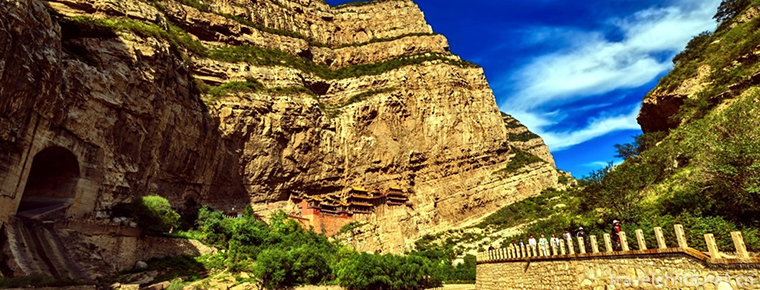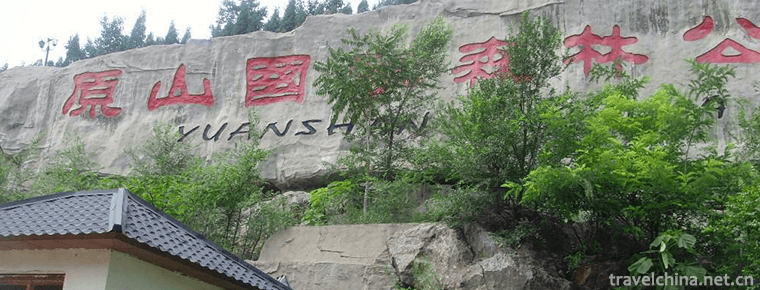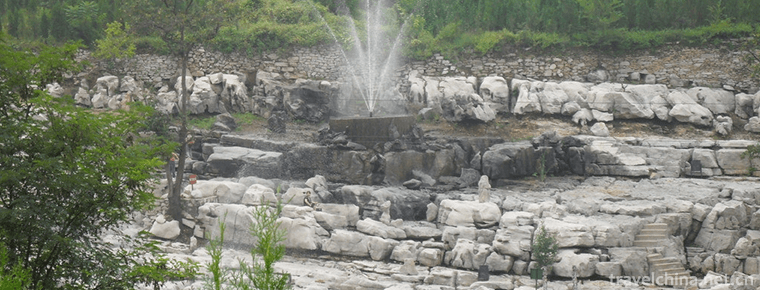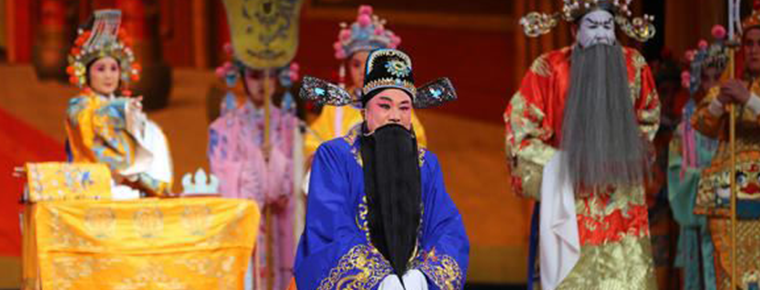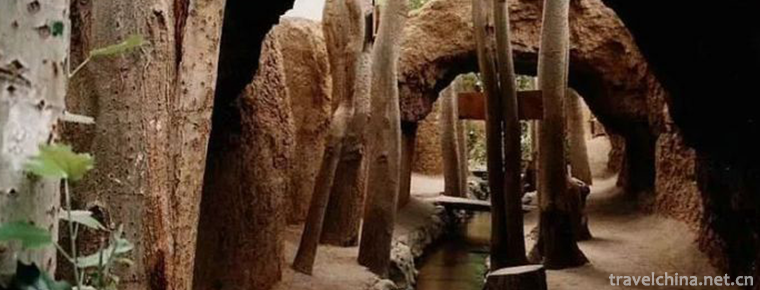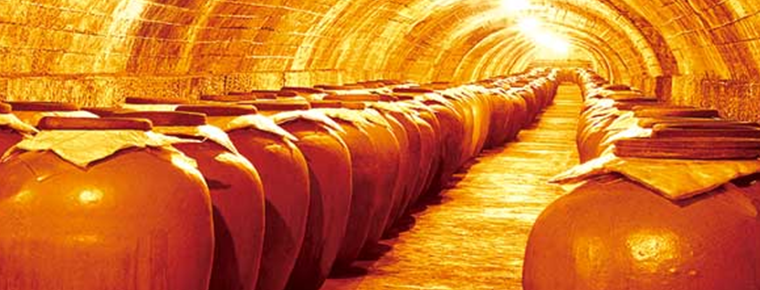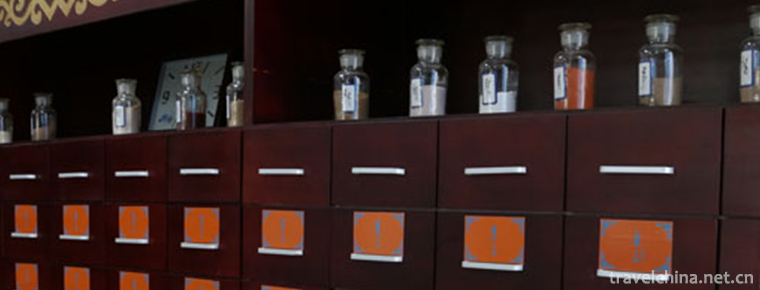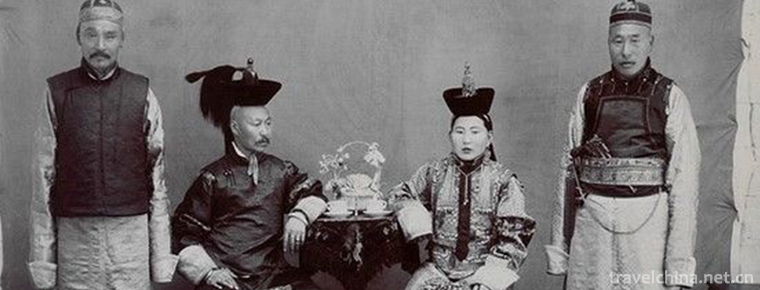Yamugou scenic spot
Yamugou scenic spot
Yamugou scenic spot is located on the Bank of Taiping River (a famous scenic spot in Guizhou Province) in Jiangkou County, Tongren City, Guizhou Province, adjacent to Fanjing Mountain (National Nature Reserve, China's top ten famous summer resort). It is a key satellite scenic spot of Fanjing Mountain Ecological and cultural tourism. The scenic spot is located in the middle section of Jiangkou fan highway, 19 km away from Jiangkou County, 30 km from Jiangkou station of Chongqing Huaihua railway, 60 km from Tongren station, 140 km from Yuping station of Hunan Guizhou railway, and 80 km from Tongren airport.
geographical environment
There is a large free parking lot (beside the road) outside the gate of the scenic area, which can accommodate more than 400 vehicles at the same time. With a total area of 26 square kilometers, the scenic area is divided into ecological parking lot, four-star hotel, rural style corridor, shopping street, yamugou original Canyon, Tujia style garden, Ming Dynasty ancient village, etc., to meet the needs of tourists in food, accommodation, travel, tourism, shopping and entertainment. Visitors can enjoy the original
Natural scenery, and can appreciate the original ecological Tujia culture, such as the original ecological song and dance performance, folk skills, marriage customs and so on.
History of development
According to records, Yamu valley was called "ghost Valley" or "Yinlong Valley" before the Tang Dynasty. After that, a divine tree grew in the valley, which was like stone and wood, with clear body and fragrant flowers. It could drive away evil spirits and cure diseases, eat its fruit, and make couples who had not had children for many years get children. It was called "Yamu", which means "tree god" in ancient Tujia language The name "yamugou" has been used up to now. Yamugou has been known as "the first ditch in Guizhou" since ancient times. "Guizhou No.1" comes from ancient books: there is a saying in Manzhi of the Tang Dynasty that "people travel all over the barbarian territory, and there is a record in the annals of Sizhou Prefecture that" the God of Yamu can not be described; the wonderful ditch is really the territory of Guizhou ".
With a total length of 50 km, Yamu Valley has a pleasant climate, no severe cold in winter and no hot summer in summer. The annual average temperature is about 17 ° C, and the air anion concentration is high. It is worthy of the reputation of natural oxygen bar. It is absolutely an excellent place for exploration, novelty seeking, secludion and leisure and health preservation. A poet once wrote a praise of "warm in winter and cool in summer, beautiful Yamu Valley". The mountain is rich in species, including golden monkey, macaque, forest musk deer, black bear, pangolin, golden pheasant, tiger spotted dish and other rare animals, as well as nanmu, Hongdoushan, Alsophila spinulosa, Davidia involucrata (Pigeon Flower), etc. The water in the ditch is crystal clear and often flows all the year round. The mountain springs Ding Dong, the waterfalls and flowers bloom, and the mountain hemp fish, horned fish, giant salamander (giant salamander) and bearded frog breed here. In the ditch, the rocks are different, colorful, like human beings, birds and animals, and their manners are different and lifelike. The cliffs are precipitous and the mountains are overlapping, and they are marvelous. Some of them are as big as children's arms, and some are as thin as hair , intertwined with each other. The ditch is full of purple robe jade belt stone, with distinct color layers, as warm as jade. It gives tourists the beautiful meaning of "Purple spirit coming from the East, promotion into Jue, jade belt across the waist, good luck and good luck". Wood, water and stone are linked together harmoniously, depicting a hundred mile Gallery in this narrow and winding valley. There are many scenic spots in the valley, such as a bowl of water, lingape playing in the water, Tianshengqiao, Yutu watching the sky, Xiongguan mandao, Jingxin pool, Hanlin Pavilion, fairy lake, gorge flying rope, ten thousand year old tortoise, couple stone, Pengyu Liudan, Wutan zuiyue moon, Dragon Cave, etc. tourists can take pictures everywhere, sit in the pavilion beside the ditch, and sometimes see various rare animals. Whether it is to stop to watch, or go down the ditch to play in the water, all make people forget to go back, indulge in the embrace of nature. When the wind blows at the top of the mountain, the valley is quiet and harmonious with Yin and Yang. After the rain and the sky is clear, the valley is full of sunshine and suitable for both movement and stillness. When visitors are drinking water in the spring, washing their feet and crossing the primeval forest, they can't help but sigh that "when Fanjing comes back, he doesn't look at the mountains; when yam comes back, he doesn't see the water.".
Main attractions
Tujia style park, covering an area of 18000 square meters, includes totem square, folk custom museum, batik Experience Hall, Tuwang building, folk custom performing hall, Fengnian waterwheel, shuinianfang, hongshiqiao, duigetan, zheyou Fang, and Jiufa liquor making workshop. Among them, the totem square has the treasure of the town garden Tujia yuniu, which is carved from a whole piece of Xiuyan Jade, with a length of 5 meters, a height of 2.3 meters and a weight of 12 tons, which can be called "the first jade ox in Asia". On April 18 every year, Tujia people from the surrounding villages gather here to hold a Cow King's meeting and make a wish to yuniu. When the wish is achieved, it must be fulfilled as soon as possible. Almost every tourist will take a photo with yuniu, Tujia yuniu has been recorded in every tourist's memory. Five totem pillars stand behind the yuniu, which are sheep, cattle, eagle, dragon and Phoenix, and white tiger, which show Tujia people's primitive worship of nature. The museum exhibits all kinds of ancient living utensils of Tujia people in Tongren and handicrafts of Tusi period. Batik Experience Hall is mainly to show the batik process to tourists. Under the leadership of batik masters, tourists can participate in the production process from spinning, weaving, waxing to dyeing, so as to truly experience batik culture and buy their favorite finished products. In the Tuwang building, visitors can go back to the Tuwang era through time and space, put on Tuwang costumes, sit on the throne and become the real king of Tuwang, and learn about Tuwang culture. There are various Tujia Dance performances in the folk performing arts hall, such as hand waving dance, money pole dance, bamboo pole dance, unity dance, and so on. There are also folk marvelous people performing unique skills here, such as knife point walking, big knife breaking chest, steel needle piercing throat, scale pole Timi, fire dance, immortal bamboo, dead chicken resurrection, etc. Some of the programs here make people feel as if they are floating to the paradise of art, while others are so exciting that they can't calm down for a long time. The Tujia Drum Tower at hongshiqiaotou has "the largest drum in China". On both sides, it is covered by a piece of whole cow hide, with a diameter of 3.39 meters and a weight of more than 1000 Jin. It was made by a famous drum maker in nearly a month. When the drum is at its maximum, it can convey a distance of ten miles. According to Tujia people's custom, three drums will bring health, freedom and happiness. Countless tourists come here to play the drum three times. Beside the drum tower, there are famous "Tujia three workshops", which are wine making workshop, oil pressing workshop and water milling workshop. The Tujia rice wine is brewed by the original method from yamushan spring water. It is sweet and mellow, and the aftertaste is endless. In the oil squeezing workshop, many tourists are shouting their trumpets and pushing the wood bumping into the oil cylinder. With the sound of "creaking and creaking", drops of vegetable oil begin to stay along the bamboo tube, and they all smile with joy when they look at the fruits of their labor. Shuinianfang can be said to be the wisdom representative of Tujia ancestors. It doesn't need to consume electricity and oil. The materials to be milled are poured into the milling trough, and the sluice outside the mill is opened. The impact force generated by the flowing water drives the stone mill to rotate, so that the rice can be ground into rice or rice flour. A drainage truck beside the ditch has a bamboo tube on each wooden leaf wheel. When the impeller does not enter the water, the bamboo tube is filled with water. When the impeller is turned to a high place, the water in the bamboo tube is poured into the water tank set up in the air. A row of drainage grooves quietly flow water, just like a water line falling on the ditch edge naturally. Looking from afar, it looks like a curtain of water, which is white and transparent in the sun, It's poetic and picturesque.
By the end of September 2012, the construction of the scenic spot has been completed, and the Yamu waterfall is developed to 3km away. The Yamu waterfall is more than 20 meters high and more than 30 meters wide. Its surface is wavy. After a wave of three times, it falls on the big rock three Zhang square in front of it. The splashing water is like a lotus in full bloom, forming a curtain of lotus water. Behind the water curtain, a wide platform is naturally formed, with several small stone tables built in. Visitors can enjoy tea, play chess and rest behind the waterfall. There is a large open area in front of the waterfall. From here there is a cableway up the mountain. On the mountain is the mysterious ancient village of Ming Dynasty. In the village, there are lush and green trees, egrets inhabit, and the bluestone steps are winding and covered with winding laneways. There are stilted buildings, scattered everywhere. There are also thatched houses in twos and threes. The roof emits light smoke and blends into the mountain scenery. Especially in the smoky weather, it's really a bit like a family in the depths of white clouds. In the ancient village, tourists can experience the original life of Tujia, eat Dingcan rice, gray wrapped tofu, mung bean powder, Tujia fried rice, drink canned tea, rattan tea, Tujia rice wine, etc., and can also participate in playing Ciba by themselves. Take the slide down the mountain from the ancient village, and enjoy the natural scenery of the whole yamugou scenic spot along the way. You can have a panoramic view of the mountains, mountains and trees, and at the same time, you can save the hardship of going down the mountain. When you go back to the foot of the mountain, if it is late, there are four-star hotels at the entrance of the scenic area. The hotel can accommodate more than 800 people at the same time. In the evening, you can choose to go to the nearby rural corridor to experience the primitive and romantic Tujia style. The village style corridor is built along the ditch, with a length of one kilometer, including country bar, chess and card room, farmhouse, snack bar, leisure station, Tujia Hotel, wupeng boat, raft, etc. All kinds of buildings have antique appearance and Tujia elements. The interior decoration is clean and tidy. With modern technology, tourists can enjoy modern software and hardware services, which can be called the best combination of primitive and modern life. In the middle of the hotel and the country corridor, there is a square of nearly 10000 square meters, which is specially prepared for the campfire Party of tourists in the evening. At night, there are several fires burning in the middle of the square. Tourists and local villagers, regardless of men, women, old and young, gather together, singing and dancing, and are very lively. Here, especially the stage for young people, a lot of people love each other, sing and dance, and have activities of throwing red shoes to find objects according to local customs. Tourists are likely to find a partner for life here. At the end of the party, visitors can immediately enter the hotel or rural hostel to rest, avoiding the long-distance journey.
Yamugou is not only a place to seek scenery and explore the beauty of self-cultivation, but also a cultural scenic spot flowing with legends. When tourists come to yamugou, they can not only meet their expectations of eating, living, traveling, shopping and entertainment, but also hear many touching stories, such as ghost Valley god house, dragon and Phoenix Chengxiang, lover's Valley, husband and wife stone, Liu Hanlin's fight against bandits, and Tu Wang's fighting method. At the same time, tourists can learn a lot of Tujia culture and experience the Tujia customs in person.
Yamugou, a magical place, a place full of romance, a place to wash one's mind, is the best destination for ecotourism.
Preferential information
After the end of the year of 2020, doctors and nurses in yamugou District of Guizhou Province will be invited to enjoy the medical certificate of "A-level" from the medical department of Guizhou Province and the Tourism Department of Ya'an City in 2020 Free admission policy for scenic spots (excluding hot spring scenic spots and franchised projects in scenic spots).







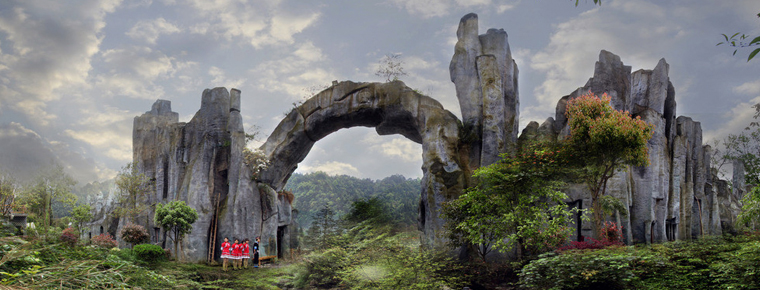
-
Mount Heng
Mt. Hengshan, also known as "Tai Mt. Hengshan", is known as "Xuanwu mountain" and "Yushan". Among them, inverted Ma Pass, Bauhinia Pass, Pingxiaoguan Pass, Yanmen Pass.
Views: 197 Time 2018-10-30 -
Yuanshan National Forest Park
Yuanshan National Forest Park is located in the southwest of Boshan District, Zibo City, Shandong Province. It was established in 1992 with the approval of the Ministry of Forestry..
Views: 163 Time 2019-03-09 -
Kaiyuan Cave Tourist Area Zibo
The karst cave in Kaiyuan is named for the cliff stone carvings in Kaiyuan period of Tang Dynasty. It is large and tall with a length of more than 1100 meters. It is divided into six halls. The natura.
Views: 126 Time 2019-03-21 -
Bouyei Leyou
Le You and Le Lang are Buyi oboe gas song instruments. They resemble suona, bowl-less, insect whistle playing, bright and sweet timbre. It can be used for Solo or singing accompaniment.
Views: 166 Time 2019-04-04 -
Huai Bang
Huai Bang (also known as Huai Diao, commonly known as Huai Qing Bangzi, Lao Huai Bang, Xiao Bang Opera and Xiao Ban Opera), is one of the traditional local operas in Henan Province and one of the nati.
Views: 93 Time 2019-05-04 -
Drama Costume and Opera Production Skills
Drama costume and costume production skills, local traditional handicraft in Suzhou City, Jiangsu Province, one of the national intangible cultural heritage..
Views: 97 Time 2019-05-08 -
Cutting Skill of Kaner Well
Kanerjing is the meaning of "well hole". It has been recorded as early as in Historical Records. It is called "well canal", while Xinjiang Uygur language is called "Kanerzi&qu.
Views: 110 Time 2019-05-08 -
Brewing Techniques of Luzhou Laojiao Liquor
Luzhou Laojiao Liquor Brewing Technology, Luzhou City, Sichuan Province, the local traditional handicraft, one of the national intangible cultural heritage..
Views: 141 Time 2019-05-15 -
Mongolian Medicine
Mongolian medicine is mainly moxibustion, and is good at using fire needles. Fire needle is a method of treating diseases by rapidly puncturing the acupoints with red-hot needle tips. This method has .
Views: 307 Time 2019-06-04 -
Tauk Taohu
Tao Ketaohu (May 13, 1864-April 1922), also translated as "Tao Ketao", Fuer Zhijin, Mongolian, the former Banner of Guoerros in Zhelimu League, Mongolian subordinate aristocrat of Nezhazazak.
Views: 97 Time 2019-06-18 -
Printing Mud Making Skills
Lu'an Indian Mud is a traditional handicraft in Jing'an District of Shanghai. It was initiated by Zhang Lu'an. The process is complicated and the finished product is kept for a long time. The printing.
Views: 355 Time 2019-07-13 -
Beijing Second College of Foreign Languages
Beijing Second Foreign Language College is a famous university with advantages of foreign language and literature and tourism management, and coordinated development of literature, management, economi.
Views: 311 Time 2019-09-06
